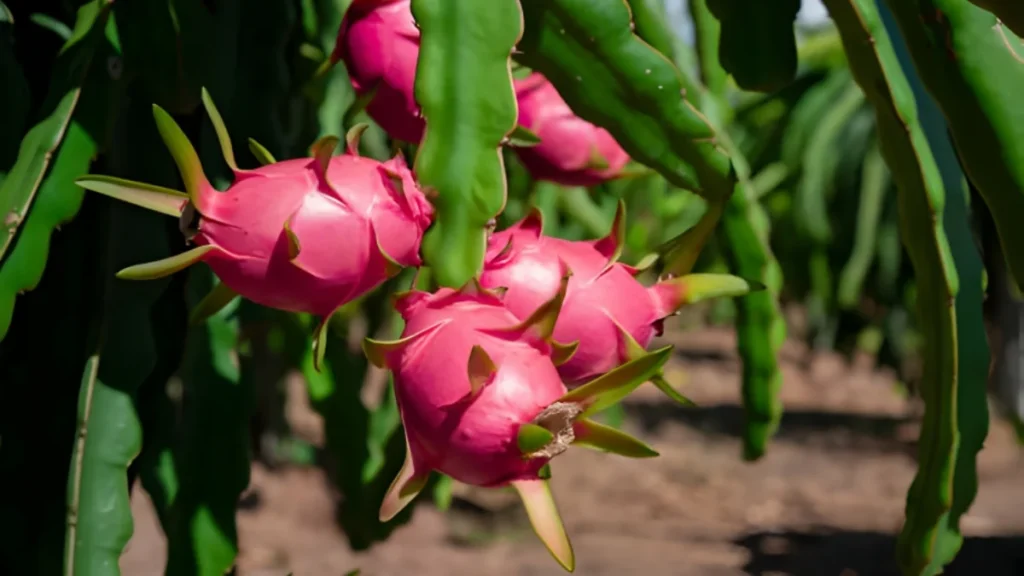Learning how to grow dragon fruit can be an exciting journey for gardeners of all levels. Dragon fruit, also known as pitaya, is prized for its beautiful look, distinct flavor, and several health advantages. This tropical fruit, which is native to Central and South America, is well-known around the world for its eye-catching hues, reviving flavor, and adaptability in the kitchen. We shall explore the intriguing realm of how to grow dragon fruit in this thorough tutorial. A beginner’s guide on how to grow dragon fruit. Follow these simple techniques to enjoy fresh, homegrown dragon fruit right from your garden.
Here’s a complete instructions on how to grow dragon fruit:
- Although it may be cultivated in subtropical areas as well, dragon fruit grows best in warm, tropical temperatures. Pick a spot in your garden that is exposed to the sun for six hours or more each day. Dragon fruit hates standing water, so make sure the soil in the region drains well to avoid waterlogging.
- Dragon fruit grows well on somewhat acidic soil (6–7) as opposed to neutral. Compost or well-rotted manure are examples of organic waste that can improve the drainage of your soil. This enhances the fertility and structure of the soil, creating the ideal conditions for root growth.
- Stem cuttings are usually used to grow dragon fruit instead of seeds. Cuts can be obtained from an established dragon fruit plant or a reliable nursery. Make sure the cuttings are at least 12 to 18 inches long before planting them in the prepared soil. To encourage upright growth, bury the bottom part of the cutting in the ground and secure it with a stake.

How to grow dragon fruit with good maintenance:
- Dragon fruit needs frequent irrigation during its early growth stage, but once established, it can withstand droughts. Give the plants regular, deep waterings, letting the soil slightly dry out in between. Refrain from overwatering since this can cause root rot.
- When your dragon fruit plants are growing, which is usually from spring through fall, feed them with a balanced fertilizer. Choose a fertilizer that has more phosphorus to encourage fruit production and flowering. Fertilizer should be applied every 6 to 8 weeks, according to the manufacturer’s dose recommendations.
- Support is necessary for dragon fruit plants as they mature to avoid sprawling. Install trellises, stakes, or a strong support system to direct the vines upward. Train the vines regularly to promote upward growth and enhance air circulation, which aids in disease prevention.
- Usually blooming overnight, dragon fruit blossoms are pollinated by moths and bats, which are nocturnal animals. You can manually pollinate the blossoms with a little brush or cotton swab, though, if these natural pollinators are hard to come by in your location. To help the fruit set, gently move pollen from one blossom to another.
- After blossoming, dragon fruit usually takes 4 to 6 months to develop. When the fruits become brightly colored and respond to light to moderate pressure, harvest them. Trim the fruit from the vine with pruning shears, leaving a short stem in place. Eat the fruits raw or add them to a variety of delicious recipes.
Conclusion:
To summarize, learning how to grow dragon fruit can be a fun and gratifying experience for gardeners of all abilities. An opportunity to enjoy the rewards of one’s labor and establish a connection with nature may be found in the process of raising dragon fruit plants, which includes everything from choosing the proper species to creating ideal growing conditions. Anyone can become an expert gardener and discover the secrets to growing this amazing fruit with commitment, perseverance, and a little education. Final thoughts on how to grow dragon fruit: Consistent care, the right environment, and attention to detail will lead to a successful harvest.
Certainly! If you’d like to learn more, please consider following our WhatsApp Channel: Harvest Gardening
A frequently asked questions:
Q1: Which dragon fruit kinds are in demand?
A1: Popular variants include Hylocereus megalanthus (white flesh with yellow skin), Hylocereus undatus (white flesh with pink skin), and Hylocereus costaricensis (red flesh with red skin).
Q2: What are the common pests and diseases of dragon fruit?
A2: Aphids, scale insects, and fruit flies are common pests. Avoid overwatering and make sure there is adequate air circulation around the plant to prevent disease.
Q3: How to grow dragon fruit in pots?
A3: Use a well-draining soil mixture, set the pot in a sunny spot, and offer support to the vine-like growth as it grows if you want to produce dragon fruit in pots.



